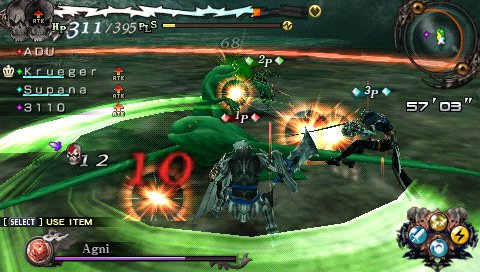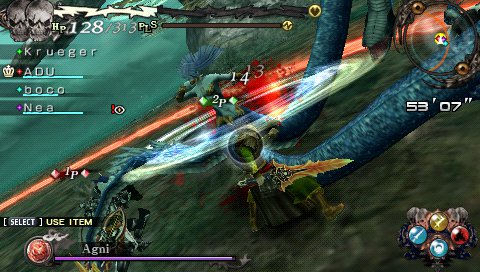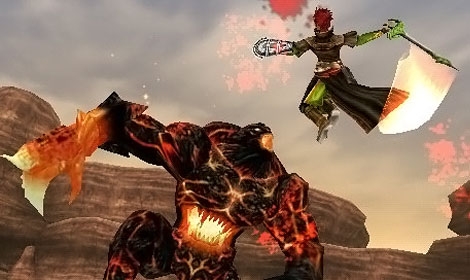Lord of Arcana is Square Enix’s latest take on the creature hunting genre. Rather than the traditional formula of killing monsters and RPG gaining experience points, Lord of Arcana throws in material collection into the mix. With powerhouses like Capcom’s Monster Hunter series out already, Square Enix has their work cut out for them. Combining the action RPG formula and creature hunting genre together is definitely an interesting mix.

Players are thrust into the typical Square Enix world where living skeletons and flying dragons exist. In this case, however, players don’t get to only battle these mythical monsters, but also harvest them for parts, which will in turn be used for making weapons and armor. This is really nothing new for long time players of the genre, but it is interesting to see Square Enix's take on it and the unique monsters that come with it. Foes range from walking skeletons to Square Enix favorites like Bahamut, which are sure to satisfy RPG fans.
Though enjoyable, the designs get tedious. Not only are the monsters constantly recycled throughout game, but the game practically requires players to replay the same levels to get either money or parts for equipment upgrades. To make it even more tedious, item drops can be random and players may end up spending half an hour on one stage, only to end up leaving without a boss' core, which is essential to making most useful items.
Despite these flaws, many of the game's gameplay mechanics are enjoyable. Players have access to a variety of weapons, ranging from a basic sword to a giant axe or even a lance that shoots fire. They all control differently enough and have different strengths and weaknesses; without learning which weapon applies best for which monsters, players will have a much harder time taking down some basic monsters even.

Each weapon also comes with unique skills that change how the weapon is used and give more variety to gameplay. For instance, the firelance has two notably different abilities: artillery and sniper stance, amongst others. The artillery ability acts like a mortar, raining down bullets on enemies head, often reaching weak spots that can’t otherwise be hit. On the other hand, sniper stance deals big damage as players manually aim at enemies. They all have their uses and should all be tried out.
Many bosses can kill players in one or two hits, which will translate to ridiculously hard for most players, but the game more than remedies this with cheap potions and several chances for players to resurrect themselves. In turn, with enough preparation, no battle should be too hard. While some bosses may seem impossible to defeat with certain weapons, players can switch to weapons between battles, meaning that any battle that’s “too hard” is usually the result of stubbornness and frugal spending.
Multiplayer is definitely the highlight of the game. Players can set up a room and join a quest together with other friends, level up, and harvest monsters together. Not only does this make grinding much less monotonous, but the game promotes teamwork as well. When a teammate is low on health, others can either use their healing items on him or even offer their own health to keep him in the fight a bit longer. Moments like these almost make the single player experience pale in comparison and I tried to convince almost every friend with a PSP to play the game for this reason alone.

While some aspects of the game could have used polishing, it’s a valiant first effort from Square Enix. The formidable, giant foes that are in most Square Enix titles are still present here and should satisfy RPG fans. The multiplayer mode is definitely more fun than the single player, but considering how hard it is to find other gamers with a PSP, most players will be stuck playing the single player mode, which is plagued by tedious grinding and item collection.

